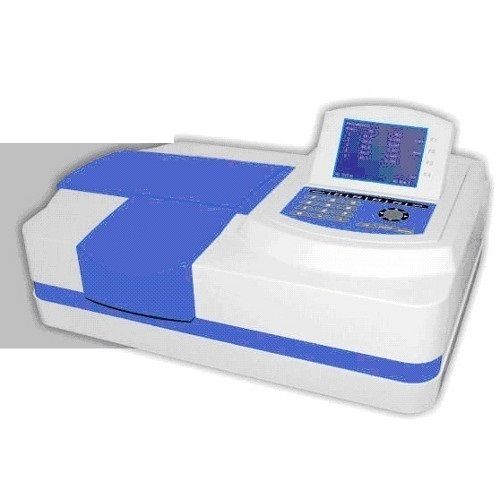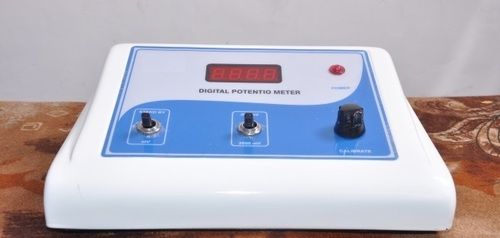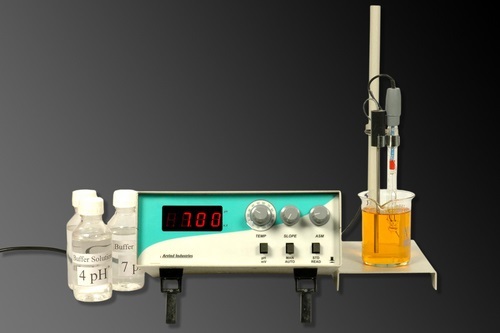Microprocessor Turbidity Meter
Price 31500 INR/ Piece
Microprocessor Turbidity Meter Specification
- Accuracy
- 3% of Reading
- Capacity
- 01000 NTU
- Automation Grade
- Automatic
- Feature
- Automatic Range Selection, Data Storage, User Calibration
- Core Components
- Photo Diode Sensor, Microprocessor Processor
- Model No
- 1135
- Voltage
- 230 V AC
- Frequency
- 50 Hz
- Temperature Range
- 0C to 50C
- Measurement Range
- 01000 NTU
- Power Source
- AC Mains
- Equipment Materials
- ABS Molded Housing
- Type
- Microprocessor Turbidity Meter
- Usage
- Water and Waste Water Analysis, Laboratory Use
- Display Type
- 7-Segment LED Digital Display
- Dimension (L*W*H)
- 320 mm x 280 mm x 170 mm
- Weight
- Approx. 2.5 kg
Microprocessor Turbidity Meter Trade Information
- Minimum Order Quantity
- 1 Piece
- Main Export Market(s)
- North America, Eastern Europe, Africa, Central America, Australia, Middle East, South America, Western Europe, Asia
About Microprocessor Turbidity Meter
Microprocessor Turbidity Meter- Display : 16X2 Lines
- Rang : 2 Ranges 0 To 200 & 200 To 1000 Jtu/Ntu.
- Accuracy : ±3% Of Full Scale Deflection In 0-1000 Jtu/Ntu.
- Sample System : 30 Mm Clear Glass Cuvettes.
- Light Source : 6.8 Volt, 0.3 Amps Tungsten Lamp.
Precision Measurement and Calibration
The turbidity meters core components include a sensitive photo diode sensor and microprocessor, ensuring reliable, accurate readings. Its intuitive user calibration system allows up to five calibration points, enabling tailored analysis for varied sample conditions and improving measurement confidence.
Robust Build and Intelligent Operation
Housed in durable ABS material, the instrument withstands rigorous laboratory environments. Automation features like automatic range selection streamline workflow, while rapid response time and easy-to-read digital display promote efficient sample processing and result interpretation.
Compliant, Connected, and Versatile
Compliance with ISO 7027 assures global laboratory standards, while RS232 connectivity facilitates integration with external data systems. Its flexible measurement range, suitable for both water and wastewater analysis, makes it ideal for research, regulatory compliance, and environmental monitoring.
FAQs of Microprocessor Turbidity Meter:
Q: How does the Microprocessor Turbidity Meter work?
A: The instrument operates on the nephelometric principle, using an infrared LED (850 nm) light source. As light passes through the sample in the 10 mm optical glass tube, the photo diode sensor detects scattered light, allowing the microprocessor to calculate and display turbidity levels.Q: What are the benefits of up to 5-point calibration for this turbidity meter?
A: Five-point calibration ensures high accuracy across different turbidity ranges, compensating for sample variability. This enhances measurement reliability and enables precise adjustments for laboratory and field analysis requirements.Q: When should I calibrate the turbidity meter?
A: Regular calibration is recommended before starting a new series of measurements, after substantial usage, or whenever accuracy is criticalsuch as in regulatory testing or environmental monitoring. Calibration intervals may also depend on laboratory protocols.Q: Where is this turbidity meter best suited for use?
A: This instrument is ideal for water and wastewater analysis in laboratories, environmental monitoring stations, and industrial settings where precise turbidity measurement is required to comply with global standards like ISO 7027.Q: What is the data output process for the turbidity measurements?
A: Measurement data can be viewed instantly on the 7-segment LED digital display and transmitted to external devices via the RS232 serial interface, facilitating data storage or integration with laboratory information management systems.Q: How is sample processing performed with this equipment?
A: Samples are introduced into the 10 mm optical glass tube. The instruments automatic range selection and rapid response time (less than 5 seconds) streamline analysis, while the ergonomic interface ensures quick and accurate calibration and measurement steps.Q: What are the main advantages of using this automatic turbidity meter?
A: Key benefits include fast and accurate turbidity measurement, robust construction for demanding environments, automatic range selection, reliable calibration, and compliance with international standards, making it a dependable tool for water quality professionals.

Price:
- 50
- 100
- 200
- 250
- 500
- 1000+
More Products in ANALYTICAL INSTRUMENTS Category
Microprocessor Uv Spectro Photometer (Double Beam)
Price 310000 INR / Piece
Minimum Order Quantity : 1 Piece
Dimension (L*W*H) : 63*47*21 Centimeter (cm)
Temperature Range : Room Temperature Operation
Display Type : LCD Graphic Display, 128x64 dots
Usage : IN LABORATORY
Digital Water Soil Analysis Kit
Price 35000 INR
Minimum Order Quantity : 1 Piece
Dimension (L*W*H) : 25*23*15
Temperature Range : 0C to 100C
Display Type : Digital LCD Display
Usage : FOR LABORATORY
Digital Potentiometer
Price 9500 INR / Piece
Minimum Order Quantity : 1 Piece
Dimension (L*W*H) : Approximately 25cm x 15cm x 10cm
Temperature Range : 0C to 50C
Display Type : LED Display
Usage : Laboratory Educational Electronics Testing
Digital Ph Meter
Price 28000 INR / Piece
Minimum Order Quantity : 1 Piece
Dimension (L*W*H) : 290 mm x 210 mm x 75 mm
Temperature Range : 0C to 100C
Display Type : Digital LCD Display
Usage : Water quality testing, laboratory, industrial application
 |
ESEL INTERNATIONAL
All Rights Reserved.(Terms of Use) Developed and Managed by Infocom Network Private Limited. |

 Send Inquiry
Send Inquiry




